Finax dosages: 1 mg
Finax packs: 30 pills, 60 pills, 90 pills, 120 pills, 180 pills, 270 pills, 360 pills
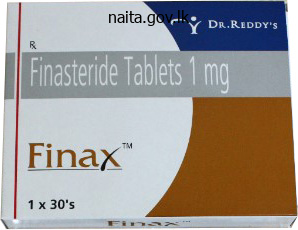
Finax 1 mg online
Thus, combining 7 mL of 40% w/v resolution with 28 mL of 5% w/v resolution would give 7 + 28 = 35 mL of 12% w/v solution. To make 200 mL of 12% w/v solution, one would use the rules of proportion as follows. For the amount of 40% w/v solution 7 mL x mL = 35 mL 200 mL hence, x = 10 g � 240 mL = 24 g 100 mL For the amount of 5% w/v answer 28 mL x mL = 35 mL 200 mL therefore, x = 28 � 200 = one hundred sixty mL 35 Alternatively, a conversion factor might be derived for the calculation: Conversion factor = 200 mL = 5. Therefore, the quantity of the 5% w/v answer required = 200 - 40 = a hundred and sixty mL or 28 � 5. The laws of proportion can be used, as described earlier than, to calculate specific portions of beginning options that would be wanted to put together a desired amount of the ultimate resolution. The alligation alternate technique for greater than two components can use any pairing of higher (than the desired) energy ingredient(s) with decrease (than the desired) power ingredient(s). The alligation methods are relevant to all forms of preparations, including powders. Also, the alligation methodology can be used for calculating the required portions for dilution of a preparation with the solvent or diluent alone by making the concentration of the decrease concentration preparation zero. If uninterrupted move of solvent is allowed, it would outcome within the equalization of focus throughout the membrane. A solution containing a nonpermeable solute creates a stress for the inward move of solvent across the semipermeable membrane. Thus, osmotic pressure can be outlined because the strain that should be applied to a solution to prevent the inward flow of solvent across a semipermeable membrane. Tonicity is the osmotic stress of two options separated by a semipermeable membrane. Tonicities of options are often represented as regards to that of normal physique fluids. Thus, options that exert decrease osmotic stress than the physique fluids are termed hypotonic whereas options that exert greater osmotic strain than the physique fluids are termed hypertonic. Hypotonic solutions have lower and hypertonic options have larger, impermeable solute concentration than the physique fluids. To define the osmotic quantity and concentration of a solute without referring to one other solution, the concepts of osmole, osmolarity, and osmolality are launched. An osmole (abbreviation: Osmol) is the quantity of a substance that represents the variety of moles of particles it types in answer. Similar to the concept of molarity, osmolarity is outlined because the osmoles of solute per liter of solution. Therefore, 1 Osmol of glucose solution represents 186 g (molecular weight) of glucose dissolved in 1 L of resolution. Also, similar to the idea of molality, osmolality is defined as the osmoles of solute per kg of solvent. These portions can be utilized with prefixes in the metric system corresponding to milli and micro. Thus, a generally used term is milliosmole (abbreviation: mOsmol), which represents 1/1000th of an Osmol. Also, while osmole represents the quantity of solute in g, Osmol represents the focus of solute in a solution. For a dissociating solute, similar to an electrolyte, 1 mol1 Osmol and 1 M solution1 Osmol answer. The osmoles and osmolarity of such a solute is calculated by multiplying with the number of particles formed on dissociation and the fractional degree of dissociation of a substance in answer. Thus, assuming full dissociation, NaCl, CaCl2, and FeCl3 form two, three, or four particles in answer. Thus, 1 mM resolution of NaCl, CaCl2, or FeCl3 represents their two, three, or four mOsmol resolution. Assuming, 80% diploma of dissociation for dilute options, 2 M of NaCl, CaCl2, and FeCl3 solutions symbolize 2 � 1+ eighty = 3. Tonicity is a crucial concept within the administration of ophthalmic and parenteral solutions. Hypertonic solutions are inclined to draw fluids out of body tissues resulting in irritation and dehydration. Hypotonic options, however, can provide excess fluid to the physique tissues. However, for the rationale that quantity of the administered answer is far lower than that of physique fluids and fluid elimination is a regulated physiological phenomenon, hypotonic solutions are relatively inconsequential.
Diseases
- Extrasystoles short stature hyperpigmentation microcephaly
- Xk aprosencephaly
- Scapuloiliac dysostosis
- Telangiectasia
- Blepharo naso facial syndrome Van maldergem type
- Regional enteritis
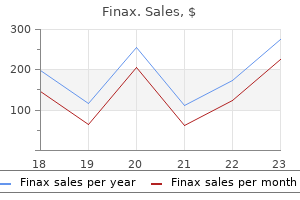
Quality finax 1 mg
Glenoid orientation ranges from 7� of retroversion to 10� of anteversion and has 5� of superior tilt. The humeral head is in 20� to 30� of retroversion and has a 130� superior inclination relative to the shaft. The coracoid course of offers attachment to three ligaments (coracohumeral, coracoacromial and coracoclavicular) and three muscle tissue (pectoralis minor, coracobrachialis and quick head of biceps). Remember, the suprascapular artery is superior to the superior transverse ligament and inferior to the inferior transverse ligament, whereas the suprascapular nerve is inferior to each ligaments. The trapezius pulls the scapula superomedially and rotates the inferior angle medially. The serratus anterior pulls the scapula inferolaterally and rotates the inferior angle laterally. Therefore, in serratus anterior palsy the scapula is pulled superomedially and the inferior angle is rotated medially, inflicting medial winging owing to unopposed pull by the trapezius. Pectoralis minor divides the axillary artery in to three parts: First half � medial to pectoralis minor (supreme thoracic branch) Second part � under (thoracoacromial, lateral thoracic) Third half � lateral (subscapular, anterior and posterior humeral circumflex). The triangular space (being medial to the quadrilateral space) is shaped by teres minor and main and the long head of triceps. The triangular interval (being inferior to the quadrilateral space) is fashioned by the long head of triceps, surgical neck and teres major. The buildings passing via the quadrilateral area are the axillary nerve and the posterior humeral circumflex artery. The circumflex scapular artery passes by way of the triangular space, whereas the radial nerve and profunda brachii artery move via the triangular interval. Impingement syndrome the term impingement syndrome is used to describe the signs associated to the rotator cuff within the absence of fullthickness tear. Types of impingement Subacromial impingement Primary � intrinsic (degenerative tendonopathy) or extrinsic (coracoacromial arch) Secondary owing to glenohumeral instability Subcoracoid impingement Internal impingement. Surgical method Deltopectoral approach: between deltoid (axillary nerve) and pectoralis major (medial and lateral pectoral nerves). The musculocutaneous nerve (5 cm inferior to coracoid) is at risk with medial retraction of coracobrachialis (elbow flexors and lateral antebrachial cutaneous branch) Lateral method: deltoid splitting (axillary nerve). When break up extends beyond 5 cm inferior to acromion; axillary nerve is in danger Posterior approach: between infraspinatus (suprascapular nerve) and teres minor (axillary nerve). Inferior retraction of teres minor has a threat of damaging the axillary nerve and the posterior humeral circumflex artery (quadrilateral space). Subacromial impingement Subacromial impingement was first described as a medical entity by Neer in 1972. Rotator cuff injury occurs with excess stress, repetitive tensile loading, or inadequate therapeutic. Subacromial impingement is an overuse phenomenon, which lacks acute inflammatory cells and may appropriately be referred to as tendinosis. The affected swollen tendon has less house underneath the acromion and causes intrinsic impingement. Extrinsic impingement occurs when the house out there for the rotator cuff is diminished because of subacromial spurring, acromial fracture or os acromiale, osteophytes off the undersurface of the acromioclavicular joint and exostoses on the larger tuberosity. Arthroscopic portals Posterior: (viewing) 2 cm medial and inferior to the posterolateral corner of the acromion Anterior: lateral and inferior to the coracoid course of Lateral: anterior one-third of the lateral border of the acromion and 2 cm inferior Additional arthroscopic portals � Nevasier, anterolateral, posterolateral, anteroinferior and posteroinferior. Examination corner Basic science oral Identification of structures from footage � muscle tissue, intermuscular areas and intervals, nerves and blood vessels Explain � static and dynamic stabilizers of the shoulder Surgical approaches � surface marking, internervous aircraft, intermuscular airplane and constructions in danger Mark the usual arthroscopic portals on the picture and mention the usage of these portals Cuff � identification of individual muscle, innervation, operate and rotator cuff interval. Stages of impingement2 Stage 1: oedema and haemorrhage <25 years old Stage 2: fibrosis and tendonitis 25�40 years old Stage 3: bone spurs and tendon rupture >40 years old. The symptoms embrace anterolateral shoulder ache over the shoulder with aggravation by overhead activities. More than 90% of partial tears occur on the articular aspect away from the acromion secondary to poor blood supply. Classifications Treatment Non-operative administration Anti-inflammatory medicines and steroid injections for symptom control. Physiotherapy aiming at stretching for full shoulder movement and strengthening the rotator cuff, deltoid and scapulothoracic muscular tissues. Operative management Subacromial decompression: arthroscopic or open launch of the coracoacromial ligament and elimination of the anterolateral lip and undersurface of the acromion. Failure to reply to conservative therapy is an indication for operative intervention.
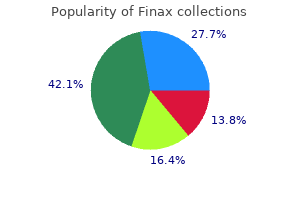
1 mg finax order with visa
Surfactants can modify the adhesion of suspension particles by reducing floor tension and/adsorption, resulting in modification forces of interaction between particles and the container. A change in the polymorphic type of the drug could result in modifications in its biopharmaceutical properties, such as dissolution rate and absorption. Therefore, the drug should not recrystallize and/or change its polymorphic type during the storage of the formulation. Chemical stability refers to lack of unacceptable chemical degradation of the drug in the course of the shelf life of the product beneath really helpful packaging and storage conditions. Since suspension contains the drug in a dispersed, particulate type, the discharge of drug in to solution in an appropriate dissolution vessel is quantified and controlled as a measure of its bioavailability. Suspensions 243 In addition, there are particular necessities for suspensions depending on their particular usage. For instance, suspensions for external use, similar to lotions ought to be fluid enough to spread easily however not so fluid that it runs off the surface too rapidly. The quantity of powder per container should be tightly managed to be as shut as potential to the quantity listed on the label. For a unit-dose container, the dispensable or deliverable quantity, in addition to the label amount, is measured. The reconstituted suspension should maintain bodily and chemical stability for the duration of usage labeled on the container underneath the labeled storage situations. Also, reasonable dose quantity for a patient is one teaspoon (5 mL) or one tablespoon (15 mL) or different nondecimal multiples of these measures. Total dose quantity which might be administered per day can also be limited by the maximum allowed daily dose of different components, corresponding to the bogus sweetener and the preservative. Drugs with hydrophobic surfaces are normally troublesome to disperse in an aqueous medium. Wetting brokers are surfactants that cut back the floor pressure of an aqueous medium and facilitate the 244 Pharmaceutical Dosage Forms and Drug Delivery wetting of hydrophobic particles. Wetting agents adsorb on to the particle floor and can partially coat the floor or form an entire monolayer. These are normally hydrophilic polymers which are added to a suspension to increase viscosity and retard sedimentation. Most suspending brokers have hydrophilic and hydrophobic regions, and work together with a suspension particle surface. Suspending brokers are sometimes hydrophilic colloids together with cellulose derivatives, acacia, and xanthan gum. These suspending agents are added to suspensions to enhance viscosity, inhibit agglomeration, and decrease sedimentation. Highly viscous suspensions could delay gastric emptying time, gradual drug dissolution, and reduce the absorption price. Suspended particles that have high charge density often show deflocculation and caking upon sedimentation. Flocculating agents allow suspended particles to link together in unfastened aggregates or flocs via weak bonds. These flocs settle quickly but form large fluffy sediment which is well redispersed. Preservatives are often added in aqueous suspensions as a end result of suspending brokers and sweeteners are good media for microorganisms. Some preservatives are ionic, corresponding to sodium benzoate, and should interact or kind complexes with different suspending ingredients-thus decreasing their preservative efficacy. Solvents, corresponding to alcohols, glycerin, and propylene glycol can also have some preservative effect depending on their focus. Sweeteners are often added to suspensions to reduce any disagreeable taste of the partially dissolved drug and to enhance palatability normally. Choice of colorant is often tied to the selection of flavor, and their selections are additionally linked to the patient population, corresponding to age group and geographic region, and the therapeutic want.
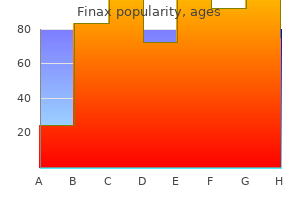
Purchase discount finax on line
Healthy volunteers had been accompanying persons or healthy men consulting for verify up; they were evaluated freed from cost, we explained them the outcomes of this research, if requested. The skin was ready as observe: After shaving the hair utilizing a disposable razor, the nurse washed the pores and skin with surgical soap and sterile water, and then dried scrupulously the perineum with a disposable towel. With patient/volunteer resting in sit position, semi-reclined, with a pillow flexing knees and thighs resting free laterally. As Table four reveals, the Urinary Symptoms had been the higher changes relating to duration of this syndrome rising from 3 points to 6. Also as a end result of higher outcomes may be obtained when the therapist is nicely skilled and experienced (21). This is worse in patients anxious and nervous; after they move their bodies, the electrodes lose contact with the skin. To avoid this, we designed a particular technique wrote earlier than, to get enough amount of indicators from the myoelectric exercise. The expertise, increase of expertise, training of the technicians and medical doctors, in addition to the data of the conduct, issues and idiosyncrasy of our male sufferers, have been very helpful for design a special approach and a great pretest explanation as a motivational session, transient but comprehensive. In this manner the participation of male sufferers in a fast non invasive procedure, is great. The Standardisation of Terminology of Lower Urinary Tract Function: Report from the Standardisation Sub-committee of the International Continence Society. The Spanish National Institutes of Health-Chronic Prostatitis Symptom Index: translation and linguistic validation. Comparisons between floor electrodes and intramuscular wire electrodes in isometric and dynamic situations. Detection volume of simulated electrode techniques for recording sphincter muscle electromyogram. Electromyography of the external anal sphincter: comparability between needle and floor electrodes. Protocol- and therapist-related variables affecting outcomes of behavioral interventions for urinary and fecal incontinence. Drug development also focuses on new dosage varieties, routes of administration, and delivery units for current drugs. Several medication may be synthesized using combinatorial chemistry and screened for in vitro activity in excessive throughput assays. The lead candidates are then synthesized in bigger quantities; screened additional for organic activity; and further optimized to maximize the affinity, specificity, and efficiency. A highly specific compound, that solely binds the target website, is prone to have minimal nontarget effects, which regularly lead to antagonistic results and toxicity associated to the mechanism of drug action. Stages of drug improvement that precede human testing are termed preclinical growth, whereas human testing stage of a drug is termed medical growth. Phase I scientific studies are aimed toward figuring out the toxicological profile and drug activity in a small group of wholesome or patient volunteers. For instance, vincristine is derived from the periwinkle plant Vinca rosea; etoposide is from the mandrake plant Podophyllum peltatum; taxol from the Pacific yew, Taxus brevifolia; doxorubicin is a fermentation product of the micro organism Streptomyces; l-asparaginase from Escherichia coli or Erwinia carotovora; rhizoxin from the fungus Rhizopus chinensis; cytarabine from the marine sponge Cryptotethya crypta; and bryostatin from the sea moss Bugula neritina. Another example is paclitaxel (taxol), prepared from the extract of the Pacific yew, used in the treatment of ovarian most cancers. Digoxin is certainly one of the most generally used medication within the administration of congestive heart failure, weakened coronary heart, and irregular coronary heart beat (arrhythmia). The frequent backyard plant, the foxglove or Digitalis purpurea, is the source of digoxin. Synthesis of analogs of pure compounds is exemplified by carboplatin-an analog of cisplatin with lowered renal toxicity, doxorubicin-an analog of daunomycin with lower cardiotoxicity, and topotecan-an analog of camptothecin with decrease toxicity. Synthesis of analogs of identified drugs is sometimes aimed at improving the concentrating on and the pharmacokinetics of a drug. Thus, tauromustine couples a nitrosourea anticancer agent to a mind focusing on peptide.
Turnip Radish (Radish). Finax.
- What is Radish?
- Are there safety concerns?
- How does Radish work?
- Dosing considerations for Radish.
- Loss of appetite, inflammation of the mouth and throat, tendency towards infections, fever, colds, cough, digestive disorders caused by bile duct problems, inflammation of the airways such as bronchitis, and other conditions.
Source: https://www.rxlist.com/script/main/art.asp?articlekey=96508
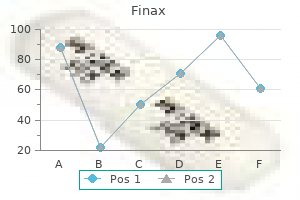
Buy finax cheap
The examiners might want you to skip over this a half of the historical past so as to go on to study the hip but it could be very important cowl these questions except the examiners point out otherwise. Know the prerequisites for an innominate osteotomy as the examiners could simply lead in to this with followup questions. An excellent paper to quote, even when the recommendations are considerably controversial. Old-style long case during which the candidate was left to take the historical past and exam without the examiners being there. I hesitate to suggest that it will have been a glaring omission but it meant the examination proceeded far more comfortably than may in any other case have been the case. It is necessary to notice these peripheral medical findings and much more essential to point out them to the examiners. That a Charnley lengthy neck prosthesis had been used in a main hip process is suggestive of serious problems occurring at this index operation. With the retrospectoscope this was a dangerous factor to say; far better to have just stuck with the clinical findings. Clinical findings will differ relying on whether the arthrodesis is surgical or has occurred spontaneously. If one got a affected person who had seen three or four previous candidates it was much sooner and more efficient extracting the related historical past compared to first in with the affected person. Candidate: I use the Exeter prosthesis as a end result of I am most acquainted with this design from my training. The Exeter femoral component has a 94�98% 10-year survival fee and a 10A Orthopaedic Data Evaluation Panel score. It is quite possible that you may be asked about therapy options for the rheumatoid hip other than arthroplasty. Difficult to respect out of context of the examination however the finest way the examiner phrased the query seemed to imply/ recommend the proper answer to the candidate. Better nonetheless is to bait/tempt the examiners with a titbit of information and see in the event that they reply. Throw a couple of current references in if you can however be sensible � it will not be notably acceptable do so. In energetic tuberculosis of the hip, on initiating rotatory movements the muscles across the hip and lower abdomen go in to spasm. The motion is then checked and any further slight sharp rotation is adopted by spasmodic contraction of the joint muscle tissue in addition to these of the lower stomach. Make certain that you simply leave yourself sufficient time to do this on the finish of your clinical examination. A giant part of the scientific examination was directed towards a cervical myelopathy present. Kader Clinical examination General guidance: Introduce yourself to the patient Ask for permission to look at the knee Adequately expose both knees thighs and toes Ask if the knee is painful Always ask the patient to walk Always bear in mind to examine backbone, hip and pulses You must have a system to study the knee. Supine Look Check again for any pores and skin discoloration, sinuses, scars, quads losing, joint swelling and osteophytosis. For small effusion use the bulge, sweep or milk take a look at: Empty the suprapatellar pouch and displace the knee fluid laterally. Compress the lateral side and look ahead to a bulge medially or use the patellar faucet or cross-fluctuation test for big effusion Pinch the synovial thickening to differentiate it from effusion Fixed flexion deformity. Double verify with card check or palpate a step-off on the anteromedial joint line Palpation; move the knee to 70��80� flexion and examine for tenderness on the joint line, collateral ligaments, femoral condyles, tibial tuberosity, patellar tendon, patella, retropatella, quadriceps insertion. Patellofemoral joint examination Check for hypermobility syndrome Assess decrease limb alignment and rotation Feel and measure the quadriceps bulk Q angle: quadriceps pull angle. The medial collateral ligament, however, bears the axis of rotation of the pivot shift, subsequently it should be stored tight by making use of valgus pressure. While the examiner holds down the foot the affected person is requested to try to raise their foot off the table. The candidate continued by asking the patient to lie susceptible to reveal dial check at 30� and 90� (external rotation was symmetrical). Memorandum `This affected person is a younger, typically male, sporty kind of person in shorts. They normally have obvious quadriceps losing with potential medial and lateral arthroscopic portal scars.
Purchase finax once a day
History Surgery Debridement of infected ulcers, drainage of abscesses and excision of contaminated bone Revascularization of ischaemic foot Amputation for gangrene. Examination Principles of management of fractures of the ankle in diabetic patients12 Patients with diabetes mellitus have greater complication charges following each open and closed administration of ankle fractures Diabetic sufferers with neuropathy or vasculopathy have greater complication charges than both diabetic sufferers without these comorbidities and non-diabetic patients Unstable ankle fractures in diabetic patients with out neuropathy or vasculopathy are best treated with open discount and inner fixation with using normal strategies Patients with neuropathy or vasculopathy are at elevated threat for each soft-tissue and osseous issues, together with delayed union and non-union. Careful soft-tissue administration, as properly as secure, rigid inner fixation, is crucial to acquiring an excellent end result Prolonged non-weightbearing and subsequently protected weightbearing are beneficial following both operative and non-operative management of ankle fractures in patients with diabetes. Advise the patient to use rigid, moulded and stiff insoles or rocker backside insoles. A giant portion of the movement achieved intraoperatively might be lost postoperatively. Some sufferers, as a result of the range of motion is increased in an arthritic joint, might complain of elevated ache somewhat than aid of pain postoperatively. Closing wedge osteotomy of the proximal phalanx Again this operation modifications the arc of motion from flexion to extension. Later on, osteophytes seem on the dorsal and/or lateral articular margin and block extension. Aetiology Precise aetiology is unknown however might embrace: Single traumatic occasion Repeated minor trauma First ray hypermobility Metatarsus elevatus Osteochondritis dissecans Gout/pseudogout. Position of fusion: 15� valgus and 25� dorsiflexion with respect to the metatarsal. There is a lack of pivoting movement during sports activities and the loss of a capability to wear excessive heels. Complications embody silicon synovitis, implant wear and deformity, implant breakage, infection, recurrent deformity and loss of motion. Complications embrace persistent pain, infection, implant loosening, implant fracture, osteolysis, bone overproduction, cyst formation and switch metatarsalgia. Hallux valgus Introduction this is an important subject that tends to crop up in both the short cases or the adult and pathology oral. It is an oral subject that you can easily botch up when you say something foolish or your answer jumps forwards and backwards. Better nonetheless, undergo a dry run together with your consultant so that you turn out to be extra confident along with your reply. There are several targets in hallux valgus correction, which must have at their centre the need to refunction the first ray: 1. Where the joint is congruent, to preserve congruency; where the joint is incongruent, to restore congruence 9. Maintain or restore the height of the metatarsal head relative to the lesser ray heads 10. Identification of tarso�metatarsal instability and administration of this where applicable thirteen. In addition, the surgery should provide a stable osteotomy and reduce the risks of avascular necrosis in the metatarsal head. The consequence of that is load switch to the lesser rays, resulting in switch metatarsalgia, plantar plate rupture and clawing of the lesser toes. The radiological correlates could also be hyperostosis of the second ray and all the options of lesser toe clawing. The limitations of a few of the osteotomies performed in orthopaedics today can Hallux valgus fundamental information Hallux valgus correction � the goals of treatment (Table 16. Extrinsic ache may be managed non-operatively with using footwear with a wider 251 Section 4: the adult elective orthopaedics oral be easily identified when checking down this list. None of the metatarsal osteotomies tackle the problem of tarso�metatarsal joint instability, albeit a none-too-common phenomenon. Problems of great toe deformity and posture are addressed with lateral launch and, the place needed, Akin osteotomy to appropriate hallux interphalangeus and great toe pronation. The lateral release primarily allows correction of the sesamoid station, and includes launch of the metatarso�sesamoid suspensory ligament and the phalangeal insertion band. For severe hallux valgus, with broadly divergent intermetatarsal angle, many authors recommend proximal metatarsal osteotomy with distal soft-tissue balancing, such because the proximal chevron osteotomy, proximal crescentic osteotomy or the Ludloff osteotomy (critics of which cite instability, lack of fixation and dorsal malunion, shortening and metatarsal head elevation as vital risks). For the purposes of the exam, make your thoughts up as to which osteotomy you like, and justify it in the context of the deformity correction objectives described above. The Scarf and Akin osteotomy with lateral release could be manipulated to obtain every surgical goal, and is applicable to essentially the most severe deformity. Aetiology Aetiology is multifactorial, with instances being described as idiopathic, familial, associated to footwear, anatomy and to gender.
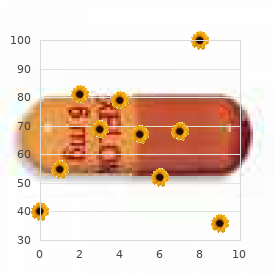
Order finax from india
Degenerative situations the lumbar spine Neurogenic claudication and radiculopathy Neurogenic claudication and radiculopathy are the most typical indications for spine surgery in older people. The symptom complex usually includes a discount in walking distance owing to bilateral leg pain, a feeling of heaviness, fatigue, aching, numbness and unsteadiness, all affecting the lower limbs. Bending ahead flexes the lumbar spine, decreasing the lumbar lordosis, and will increase the space obtainable for the cauda equina inside Outcomes of surgical procedure for spinal stenosis and spondylolisthesis There are many alternative surgical techniques that have been described for treating compressive lesions, including laminectomy, undercutting facetectomy, laminotomy, selective nerve root decompression, and many others. Whichever method is undertaken remedy is aimed at eradicating the mechanical compression and restoration of symptoms relies on restoration of the compressed neural structure. However, the end result of surgical procedure of this type is relatively predictable, and dramatic enhancements in leg pain, again pain, strolling distance (and associated disability) and 265 Section 4: the grownup elective orthopaedics oral Table 17. Recent top quality information from potential research in numerous sufferers have shown the clinically vital advantages of spine surgery over conservative treatment and maintenance of these enhancements within the medium term. Controversies and novel treatments One of the primary dilemmas that the backbone surgeon faces when treating a degenerative spondylolisthesis is whether or not or not to fuse the backbone to stabilize and forestall development of the spondylolisthesis. Instrumentation is associated with larger fusion rates and, in youthful patients with greater calls for, could theoretically assist forestall development of the slip. However, in an older age group the spondylolisthesis rarely progresses and easy decompression avoids the problems associated with instrumented or non-instrumented fusion surgical procedure. Novel applied sciences, including interspinous spacer devices, have been marketed and are at present being evaluated. Typically, they try to deal with signs by flexing the spine on the symptomatic level, relieving signs in an identical but exaggerated way to bending ahead. Encouraging early results have been reported but the indications for surgery of this sort have nonetheless to be established. Degenerative circumstances affecting the cervical spine Radiculopathy and myelopathy Cervical spondylosis is a widely used however non-specific time period referring to the generalized degeneration of the cervical spine regularly seen in older people though it can begin at an early age (over 30 years). Neck pain caused by cervical spondylosis usually presents as episodic bouts of ache that resolve over days or even weeks. Symptoms may have been exacerbated by increased exercise and could additionally be related to occipital headache. Cervical radiculopathy is often brought on by a compressive lesion affecting a single nerve root within the cervical spine. Compression may be attributable to osteophytes, herniated disc fragments, facet joint hypertrophy and loss of disc peak. It presents with unilateral neck ache and ache radiating in to the upper limbs within the distribution of the affected nerve root. These signs are associated with decreased or altered sensation and decrease motor neurone signs in an analogous distribution. The natural history of radiculopathy is benign, with a big proportion of instances resolving spontaneously or with conservative treatment. Radiculopathy affecting the C6 nerve root (exiting above the sixth cervical vertebra) will produce pain radiating to the radial side of the forearm and hand affecting the thumb and index fingers, decreased or altered sensation in an analogous distribution with weak spot of biceps (supination) and wrist extension. Radiculopathy affecting the C7 nerve root will produce pain radiating to the long (middle) finger, decreased sensation in the identical space, weakness of wrist flexion, elbow extension and a decreased triceps reflex. Cervical myelopathy could be outlined as dysfunction of the spinal twine brought on by compression of the cervical cord inside the cervical spine. The compression is usually caused by osteophytes, ligamentum flavum hypertrophy and bulging or prolapse of the intervertebral disc. Cervical myelopathy presents with upper motor neurone signs and signs in each higher and decrease limbs. Initial presentation may be delicate but detection and treatment is essential earlier than irreparable wire damage happens. Typically the myelopathy follows a gradual, progressive course deteriorating in a stepwise manner with stable intervals and periods of speedy deterioration. Symptoms 266 Chapter 17: Spine oral core subjects include decreased coordination, lack of nice dexterity. Balance and strolling problems could lead to frequent trips, falls or bumping in to things. Associated (upper motor neurone) signs include: a widebased unsteady gait, upper and lower limb weak spot, hyperreflexia, intrinsic muscle wasting within the hand, constructive Babinski and Hoffman indicators and an inverted radial reflex. Additionally, in plenty of cases as cervical spondylosis develops progressive loss of disc height anteriorly results in a progressive loss of the normal cervical lordosis and will itself produce cervical kyphosis. To avoid this combination of risk factors, kyphosis is a relative contraindication to posterior surgical procedure in spondylotic patients.
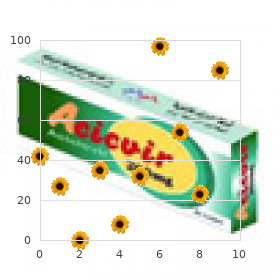
Finax 1 mg for sale
The limp is due to either pain or stiffness or apparent shortening caused by adductor spasm. In comparison, a really tough esoteric long case might imply that the examiners are more probably to be forgiving should you should make the odd mistake in the course of the historical past and examination. Stiffness Inability to put shoes, socks or stockings on, lack of ability to reduce toenails, get out and in of a shower, in and out of a automobile. No fixed flexion deformity of the hip but marked restriction of inside and exterior rotation in flexion with solely a jog of motion present. Abduction restricted to 20�, adduction similarly restricted to 20�; both have been painful. Right knee Effusion, fixed flexion deformity of 5�, flexion decreased by 40� compared to the other side. Discussion `I was asked by the examiners to demonstrate the entire above clinical signs. The discussion targeted on her cardiac condition and health for surgery: this lined the management of the arthritic hip and wish for cardiology enter earlier than any hip surgical procedure, as this was elective lifestyle surgery and never an urgent, life-threatening condition. Examination corner Long case 1: 80-year-old woman with a painful proper hip and knee History Comorbidity elements included a historical past of great exertional angina and previous myocardial infarction. This is mentioned within the National Joint Registry 2010 report,32 specifically on pages 65 and sixty six. Discussion of hip registers Discussion may cowl funding and upkeep of the register, efficiency of implants, revision rates, stratification of variables (age, indications, gender, and so forth. He has issue putting his sneakers and socks on and getting in and out of the bath. There might be issues with metalwork elimination so it is necessary to have special instruments obtainable. Clinical examination Standing `On general examination the patient is of average peak and construct. The average age of onset of rheumatoid disease is 55 and the common patient has had hip symptoms for four years. In basic, forefoot deformity ought to be the first corrected to be positive that the patient is able to comfortable weightbearing and scale back sources of an infection at a later date. The hindfoot ought to be corrected last as correction of hip and knee deformities may alter the dynamic place of the hindfoot. There are concerns relating to: Polysystemic/multiple joint nature of the illness Polypharmacy, as sufferers typically take quite lots of medicines that may affect surgical procedure Immunosuppression both from the illness or from medication Difficulties with rehabilitation. He stands up straight with a flexion angle of his right leg, which, on straightening the pelvis, revealed a left leg length discrepancy. The patient sat down with problem, only flexing the hip with marked external rotation. Supine `Measurement of leg lengths utilizing a tape measure confirmed 2 cm of real shortening. The leg was neurovascularly intact and examinations of the backbone and each knees had been unremarkable. Examination Shake arms with the affected person to see skin condition, dry, eczema, psoriasis, scars, and so on. On basic inspection the patient has options of intensive rheumatoid illness affecting many joints. The buttock and thigh are markedly wasted, with the limb held in exterior rotation and glued flexion. The pores and skin overlying the joint seems shiny, skinny and atrophic with evidence of spontaneous bruising. Operative points Careful positioning on the operating desk is vital owing to poor pores and skin and different painful joints; apply padding to all strain areas. Bone inventory is often poor, being delicate and osteoporotic, so great care is required during dislocation and relocation of the hip to keep away from fracture of the femur. Beware of the affected person in a wheel chair Some sufferers with extreme a number of lower extremity involvement may be confined to a wheelchair.
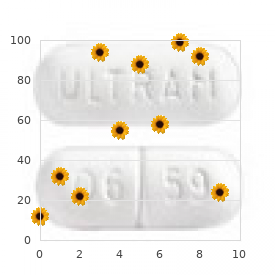
Order finax toronto
Examination of the left hip movement demonstrated a world decreased range of movement, which was painful but not stiff. Be conscious of the present controversies of delivery and duration of antibiotic treatment for a two-stage procedure. Pain felt in the buttock or groin suggests vascular or neurogenic claudication, acetabular loosening or osteolysis. Less frequently it might point out iliopsoas impingement or tendonitis secondary to acetabular retroversion, hernia or gynaecological or genitourinary causes. Thigh pain may be secondary to a loose femoral implant Pain felt at rest or through the night time raises the potential of infection or malignancy Were there any issues with the wound postoperatively A history of persistent wound drainage, haematoma or a prolonged course of antibiotics following the operation should improve the index of suspicion for infection as a reason for the ache Has there been any recent bacterial infection or potential bacteraemia: urine or chest an infection, dental process, etc. This might be attributable to aseptic loosening or late onset infection With aseptic loosening a triphasic sample is traditional. Aspiration of the hip this is carried out in theatre, beneath sterile circumstances, with blood tradition bottles with or without arthrogram. Just as necessary is the linking of the words and sentences that connect these details. There are quite a few potentialities; the commonest causes could be infection, aseptic loosening or referred pain from elsewhere. It is probably a really troublesome problem to deal with, particularly if deep an infection is present in the medullary canal. Keep the dialogue easy, easy and non-controversial, and keep away from getting yourself in to a corner. Broken trochanteric wires, non-union of the greater trochanter Some drawback is present but it may be troublesome to pin it down on to this. This is a reasonable choice to suggest however watch out to follow through and mention that a bone scan may not always be significantly helpful in differentiating between aseptic and septic loosening. Hip arthrography and aspiration this is carried out in theatre beneath sterile conditions, with blood tradition bottles with or with no hip arthrogram. Arthrography of the hip can reveal pocketing of the radioopaque medium within the space of the pseudocapsule, which suggests infection. Examination Look on the state of the wound, pores and skin and soft tissues, noting irritation and healed sinus tracks. A marked Trendelenburg gait suggests that the abductors are non-functional Palpation: are there any hernias or defects in the deep fascia Extreme ache with any hip vary of movement suggests energetic synovitis and raises the concern of an infection. Peripheral vascular disease may sometimes current as discomfort within the hip or thigh space. Differential analysis that is divided in to intrinsic and extrinsic causes (Table 8. Were there any postoperative issues corresponding to wound an infection or washout or want for antibiotics Look for evidence of repetitive impingement demonstrated by radiographic indicators of repetitive bone-to-component abutments similar to a melancholy within the neck or a contour just below the junction with the element (divot sign) usually related to a reactive exostosis. The implant has a subhemispherical acetabular component and a decrease diametrical clearance between components. The low clearance increases metal wear and the subhemispherical design increases the chance of edge loading of the acetabular element, especially in malpositioned, small elements. Intrinsic causes Soft tissues can often turn out to be irritated by the prosthesis. The psoas tendon may become irritated by a distinguished anterior flange of an insufficiently anteverted acetabular part. Instability can lead to pain from capsular stretch and from soft-tissue impingement. The examiners can now select a quantity of paths to go down: Preoperative planning for revision hip surgical procedure Surgical approaches used Choice of implant Complications of revision surgery. This compares with a 5% cumulative revision fee at 8 years for the Birmingham hip from the Australian registry. Memorandum Extrinsic causes Spinal stenosis and nerve root irritation could cause pain in the buttock, thigh and generally the groin. They can be attributable to a direct injury from a surgical instrument, haematoma, cement or scar entrapment or could be secondary to lengthening. It has been current for the past 5 years however has turn into far more severe in the final 18 months. The pain is current every day as a boring intermittent pain and is worse with activity. Putting sneakers and socks on could be difficult and the patient is unable to go for lengthy rides in a automobile.
Real Experiences: Customer Reviews on Finax
Ivan, 64 years: No point out at all about the function of radiographs within the management of the procedure although they have been right in front of him on the table.
Fabio, 28 years: Bone stock is usually poor, being soft and osteoporotic, so great care is required during dislocation and relocation of the hip to avoid fracture of the femur.
Killian, 60 years: Anterior gutter access is finest off traction Complications Studies have reported variable complication charges, ranging from 7.
Irhabar, 44 years: Patients with bilateral wrist fusions are believed to have much less dexterity and higher useful compromise than those with one wrist fused and arthroplasty of the other.
Altus, 24 years: As you method the examination, however, most people find it useful to work out a study schedule to keep away from working out of time and missing important matters.
Moff, 31 years: Knowing the pattern imply, commonplace deviation, and size, and the (assumed) inhabitants imply, a t-score or t-statistic could be calculated.
Zarkos, 52 years: Examples are fumed silica, microcrystalline cellulose, magnesium carbonate, kaolin, and bentonite.
Giacomo, 59 years: References American Academy of Family Physicians, American Academy of Otolaryngology�Head and Neck Surgery, American Academy of Pediatrics Subcommittee on Otitis Media With Effusion.
10 of 10 - Review by D. Daryl
Votes: 101 votes
Total customer reviews: 101
References
- Hatzistergos KE, Quevedo H, Oskouei BN, et al. Bone marrow mesenchymal stem cells stimulate cardiac stem cell proliferation and differentiation. Circ Res 2010;107:913-922.
- Parambil JG, Myers JL, Ryu JH. Histopathologic features and outcome of patients with acute exacerbation of idiopathic pulmonary fibrosis undergoing surgical lung biopsy. Chest 2005;128:3310-15.
- Jaquiss RD, Imamura M. Management of Ebstein's anomaly and pure tricuspid insufficiency in the neonate. Semin Thorac Cardiovasc Surg. 2007; 19:258-63.
- Fruchter O, Ben-Ami H, Schapira D, et al. Giant cell arteritis complicated by spinal cord infarction: a therapeutic dilemma. J Rheumatol 2002;29:1556-8.
- Hooton TM, Bradley SF, Cardenas DD, et al: Diagnosis, prevention, and treatment of catheter-associated urinary tract infection in adults: 2009 International Clinical Practice Guidelines from the Infectious Diseases Society of America. Clin Infect Dis 50(5):625-663, 2010.
- Kuchenbaecker KB, Hopper JL, Barnes DR, et al. Risks of breast, ovarian, and contralateral breast cancer for BRCA1 and BRCA2 mutation carriers. JAMA 2017;317(23):2402-2416.
